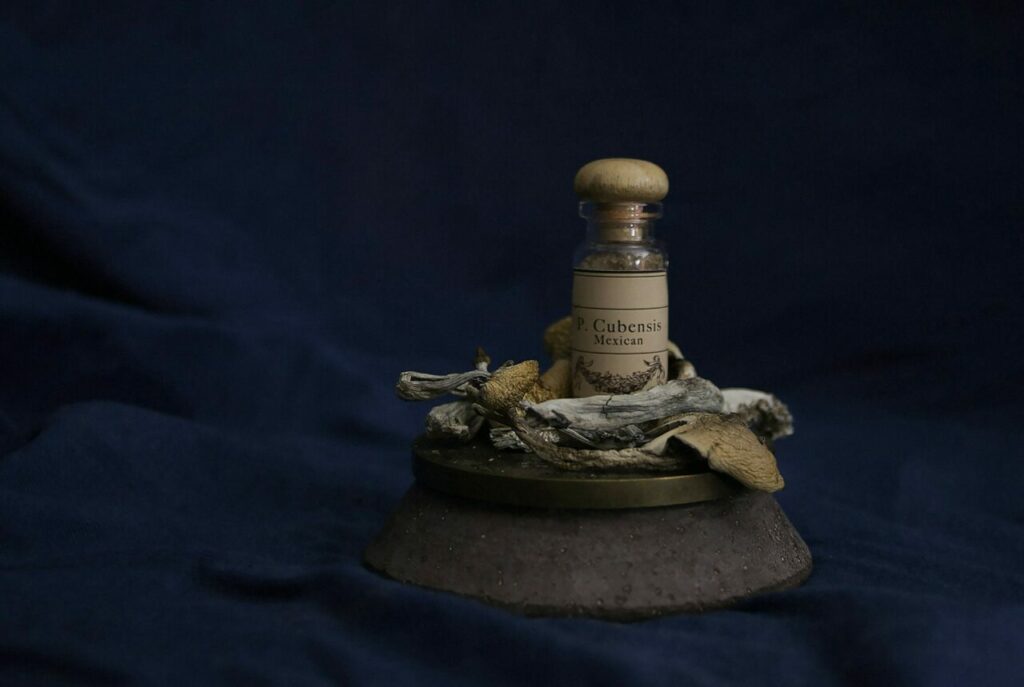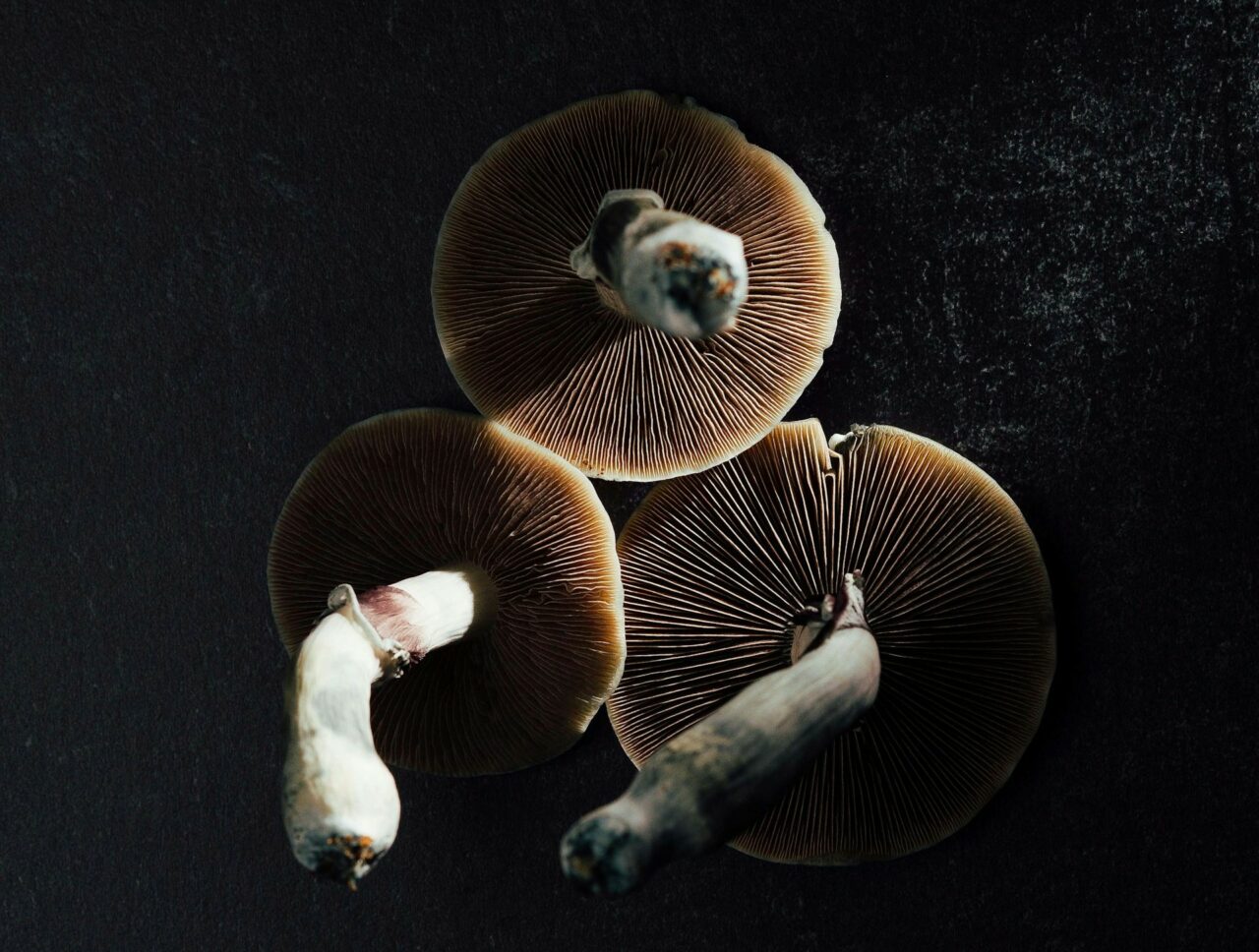The interest in naturally occurring magic mushrooms in Canada is on the rise, and concurrently, so is the popularity of lab-created psilocybin products. Despite the guaranteed dosage of lab-produced products, which is a compelling factor for researchers, it may not be common knowledge that natural mushrooms can possess greater potency than their synthetic equivalents. The two have been identified to have significant differences, including variable strength levels.

Key Takeaways:
- Natural mushrooms, with over 180 species, offer varying levels of potency, influenced by factors such as species type, consumption method, cultivation, and individual tolerance.
- Synthetic psilocybin, a lab-created version of the natural compound, is manufactured in regulated settings to ascertain consistency and purity, making it suitable for clinical research, especially in mental health therapies.
- The combined effects of different compounds found in psychedelic mushrooms like psilocin and baeocystin can deliver a deeper and more intense experience than any single compound can offer.
Growing Market: Diverse Forms of Psychedelics
Psilocybin mushrooms are gaining quick popularity in Canada, especially for the treatment of mental health issues such as OCD, depression, PTSD, and anxiety. These trends have prompted provincial governments to contemplate decriminalizing recreational use of these substances.
In 2020, Canada legalized restricted medicinal use of these mushrooms under specific conditions. As recent as last year, the federal government granted permission for certain terminally ill patients to use these substances for symptom management.
These progressive policies have paved the way for the advent of synthetic psychedelics.
Ongoing Discourse
The perpetual discussion comparing organic to lab-made psychedelics revolves around safety, accessibility, and cost considerations.
Many advocate for natural psychedelics citing a more comprehensive and traditional experience. Conversely, supporters of lab-engineered variants underscore their suitability for medical use due to easier standardization, alongside guaranteed dosage control and quality assurance.
While synthetic psychoactive substances could potentially expand their accessibility, there are lingering worries about possible drug monopolization. Critics warn that this could lead to lesser
Increased accessibility can sometimes lead to higher costs for users.
A Basic Guide to Understanding Psilocybin
Psilocybe cubensis, a popular type of magic mushroom, is among the variety of naturally found psychedelic substances that exist today. Known for their mind-altering effects, magic mushrooms come in numerous strains such as Golden Teachers, Amazonian Cubensis, Blue Meanies, and more, with Psilocybe cubensis being the most well-known.
How the Psychedelic Process Works
Psilocin, a compound derived from this mushroom, transforms into a distinct chemical when metabolized by the liver. This new compound interacts with the brain’s serotonin receptors, primarily the 5-HT2A receptor.
This receptor is vital in mood regulation, cognitive functions, and perception. Its interaction with the new compound transforms the typical functioning of serotonin pathways, causing changes in visual and auditory perception, thought processes, and emotional states. This interaction leads to enhanced mood, increased creativity, introspection, and what is often referred to as “psychedelic” experiences.
Two Main Categories
| Natural | Available in over 180 species of fungi, the potency differs based on the mushroom species. Psilocybe cubensis is a widespread variety. The effects can vary depending on consumption methods, cultivation practices, and individual tolerance. |
| Synthetic | Manufactured in laboratories and chemically identical to natural compounds. They are developed in controlled environments to maintain consistency and purity. These are progressively being examined for clinical applications, particularly in mental health treatments. |
Comparing Natural and Lab-Made Psychedelics: Key Differences
Natural versions of these substances are found in specific magic mushroom species. Indigenous communities in North and South America have traditionally used these mushrooms in their rituals and ceremonies, viewing them as sacred or divine.
- Derived from plants and mushrooms
- Utilized in ancient rituals and healing practices
- The potency of each strain is dictated by its unique genetic makeup
Contrary to this,
Lab-produced drugs are HTML:
A substance that mirrors the natural chemical structure of a specific compound is meticulously created by experts in controlled settings to guarantee precision. Even though these drugs function alike to their natural counterparts, they have the potential to alter the overall psychedelic experience.
- Produced by competent pharmaceutical professionals
- Latest advancements intended for medicinal use
- Consistent potency due to a regulated production process
Organic substances provide additional benefits because of their bioactive compounds. Various types of mushrooms can have diverse levels of psilocybin and other compounds, leading to a range of effects.
Research Insights
A study carried out at the Hebrew University revealed that psychedelic mushrooms have a more potent and enduring effect on synaptic plasticity than their synthetic counterparts. The research team explored how the drug affected the brain activity of mice by scrutinizing changes in behaviour and specific brain chemicals.
The study determined that the extract decreased head twitches and encouraged the formation of new brain connections. This suggests that the mushroom extract could provide more benefits than a single compound.
The researchers also introduced the concept known as the “entourage effect”. They described it as the event in which the combined effect of multiple compounds in psychedelic mushrooms could be more potent than the influence of individual compounds. In the case of mushrooms, psilocin, baeocystin, and other tryptamines may synergistically create an intense experience.
These supplementary chemicals are absent in lab-produced substances, which could result in minor differences in effects, even if the psychedelic content is identical.
Expert Opinions on the Superiority of Nature
Research consistently shows that psilocybin—in any form—delivers promising results for the treatment of various psychiatric disorders. A study carried out in 2024 examined the effects of controlled substances on patients with treatment-resistant depression. It observed symptom improvements following the administration of magic mushrooms.
When used in combination with other treatments, organic psychedelics may promote enhanced emotional processing and insights during therapy sessions, thereby improving long-term results.
Researchers from the same university have found that hallucinogenic mushrooms boost synaptic plasticity. They possess a unique metabolic profile that affects oxidative stress and energy production pathways, unlike lab-manufactured psychedelics.
Potential Market Effects
The growing body of research on this subject could shape Canadians’ perceptions and buying behaviors related to psychedelics. Initial efforts by Health Canada, such as the Special Access Program, seem to be making promising strides towards legalizing and revolutionizing the therapeutic landscape. Psilocybin-assisted therapy could soon become a prominent treatment method.
As clinical trials and therapeutic contexts increasingly emphasize organic options, Canada’s progression towards fully harnessing the power of organic psychedelics could lead to significant advancements in mental health treatments.
How to Safely Acquire Shrooms in Canada
- Through Section 56 Exemption: Health Canada recognizes that psilocybin may be used as an alternative therapy for patients with severe medical conditions. This exemption is part of the Controlled Drugs and Substances Act.
- Clinical Trials: Preliminary clinical trials are approved to investigate the drug’s potential in treating mental health disorders. Participants must meet certain requirements and undergo physician screening.
- Online Market: Psilocybin capsules or edibles can be bought from online sellers in Canada, but it’s crucial to ensure you’re purchasing from reliable sources.
Experience the Power of Natural Compounds
Nature is brimming with marvels, including shrooms. Rather than turning to synthetic psychedelics, consider the naturally potent magic mushrooms from Canada. They are powerful and therapeutic. Discover the best, naturally sourced shroom strains at Micro Zoomiez Canada.
The shrooms we have for sale not only meet the standard but exceed it by maintaining their purest and most authentic form in the dried state. Place your order now and receive your chosen items discreetly and conveniently delivered to your home.
Frequently Asked Questions
What are baeocystin and norbaeocystin?
Both substances are tryptamine or indole alkaloids, chemically akin to psilocybin. These tryptamine derivatives act as auxiliary alkaloids in shrooms, adding to the overall psychedelic experience, albeit to a lesser extent. Baeocystin and Norbaeocystin possess a similar chemical structure but
The psychoactive properties of these substances may vary.
Are organic dried mushrooms found in capsules and edibles?
Your experience may vary depending on the source. Online dispensaries offer products that are rich in organic compounds, which can trigger a complete entourage effect. In contrast, synthetic compounds commonly found in capsule form are frequently used in clinical trials and therapeutic practices.
Can natural psychedelics lead to deeper experiences?
It’s worth noting that expecting a profound experience from a natural psychedelic can potentially create the very same experience. This is because our anticipations, which form part of the ‘set,’ can influence the journey. Natural psychedelics are often tied to ceremonial traditions, and this ritualistic context can lead to uniquely rewarding experiences. These experiences can be notably different from sessions in clinics that use synthetic compounds.





